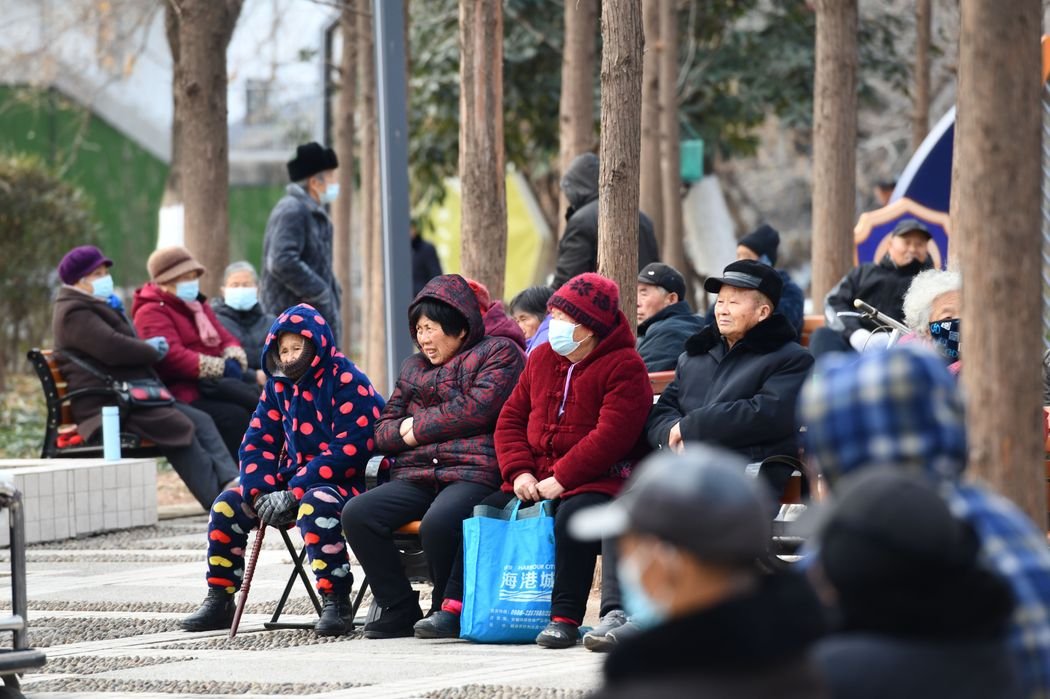Population decline for second consecutive year
China's population is set to shrink for a second straight year in 2023, hit by record low birth rates and a wave of COVID-19 deaths, and this is expected to have a profound long-term impact on the growth potential of the world's second-largest economy.

Chinese women are increasingly reluctant to have children, with the country's birth rate at a record low of just 6.39 births per 1,000 people. Photo: New York Times
China's National Bureau of Statistics said the country's total population fell by 2.08 million, or 0.15 percent, to 1.41 billion in 2023. That was much higher than the 850,000 decline in 2022, and the highest since 1961.
China experienced a massive nationwide COVID-19 outbreak early last year, followed by three years of strict quarantine measures until authorities abruptly lifted restrictions in December 2022.
Total deaths in China last year rose 6.6% to 11.1 million, the highest since 1974. New births fell 5.7% to 9.02 million, leaving China with a record low birth rate of 6.39 births per 1,000 people, down from 6.77 in 2022. However, this is still higher than Japan's 6.3 per 1,000 in 2022 and South Korea's 4.9.
China’s birth rate has been falling sharply for decades, due to the one-child policy that was implemented from 1980 to 2015 and rapid urbanization during that period. Like previous economic booms in Japan and South Korea, large swaths of the population moved from China’s rural farms to cities, where having children was more expensive.
The number of babies has been in free fall for the past few years. Demand for children is set to fall further into 2023, youth unemployment is at a record high, wages for many white-collar workers are falling and the crisis in real estate, where more than two-thirds of household wealth is held, is intensifying.
Official figures released Wednesday showed China had less than half the number of births in 2023 compared to 2016, after the country abolished its one-child policy. The latest figures show the fertility rate – the number of children a woman will have in her lifetime – is close to 1, a level considered “extremely low” by demographers.
Existing concerns
The new data adds to concerns that the growth outlook for the world's No. 2 economy is fading as fewer workers and consumers are left, while rising costs of caring for the elderly and pension benefits put more strain on local government budgets.
India overtook China as the world's most populous country last year, according to United Nations estimates. In the long term, UN experts see China's population shrinking by 109 million by 2050, more than three times the decline they had predicted in their previous 2019 forecast.
China’s population is aging much faster than other major economies as it develops. China’s per capita gross domestic product in 2022, when its population first begins to decline, will be about $12,000, just over a third of Japan’s when its population began to decline, the report said.
In aging Japan, more and more seniors are staying in the workforce, helping to keep the workforce stable even as the population shrinks. Beijing has talked for years about raising the retirement age — one of the lowest among major economies — but has repeatedly delayed the move.

One in five Chinese people is 60 or older. Photo: Zuma Press
Today, one in five Chinese people is 60 or older, an age when most people in the world’s second-largest economy, at least in cities, have retired. The proportion of Chinese people aged 65 or older will reach 30% and 41% by 2050 and 2100, respectively, according to United Nations estimates based on China’s 2020 census data.
Chinese officials fear the impact this “demographic time bomb” could have on the economy, as rising costs of elderly care and financial support risk being unmet by a shrinking pool of working taxpayers.
The Chinese Academy of Sciences has predicted that the pension system in its current form will run out of money by 2035. By then, the number of people in China over 60 — the national retirement age — will have risen from about 280 million to 400 million.
The trend is difficult to reverse and the stock index is falling.
To encourage more births, local governments have tried everything from matchmaking to cash incentives. One district in Wuhan last year subsidized couples who had a third child 10,000 yuan, or $1,395, each year for the child’s first six years.
Chinese demographers are proposing further reforms to fertility policies, the Global Times reported on Tuesday, with some hoping that more babies could be born in 2024 during a post-pandemic baby boom or because people are eager to have children born in the Year of the Dragon, which begins in February.
This was also shared by the China Population and Development Research Center. Dr. He Dan, director of the center, told the Global Times: “Although cities have issued a series of… policies to support women giving birth, public expectations have not been met.”
Against that backdrop, economic challenges are likely to persist. China said on Wednesday its economy grew 5.2% last year from a year earlier, slowing from more than 6% before the pandemic, reflecting a sluggish real estate sector and weak consumer spending. Youth unemployment soared to a record 21% last year, further dampening the desire of young people to start families.
According to a study released late last year by the Development Research Center, an organization under the State Council of China, the number of newborns in the country is likely to fall by one million per decade in the coming decades. And this is unlikely to change, according to demographer Chu Yun of the University of Michigan: “As we have observed repeatedly in other low-fertility countries, fertility declines are often difficult to reverse.”
Notably, Chinese stocks lost ground after the population data was released. Hong Kong's Hang Seng Mainland Properties Index fell 4.9% to an all-time low, while the Hang Seng China Enterprises Index fell 3.5%. The Hang Seng Index fell 3.4%, while the CSI 300 index of stocks listed in Shanghai and Shenzhen fell 1.1%.
Quang Anh
Source


![[Photo] Looking back at the impressive moments of the Vietnamese rescue team in Myanmar](https://vstatic.vietnam.vn/vietnam/resource/IMAGE/2025/4/11/5623ca902a934e19b604c718265249d0)




![[Photo] "Beauties" participate in the parade rehearsal at Bien Hoa airport](https://vstatic.vietnam.vn/vietnam/resource/IMAGE/2025/4/11/155502af3384431e918de0e2e585d13a)






















![[Photo] Summary of parade practice in preparation for the April 30th celebration](https://vstatic.vietnam.vn/vietnam/resource/IMAGE/2025/4/11/78cfee0f2cc045b387ff1a4362b5950f)































































Comment (0)